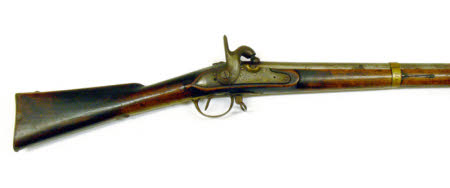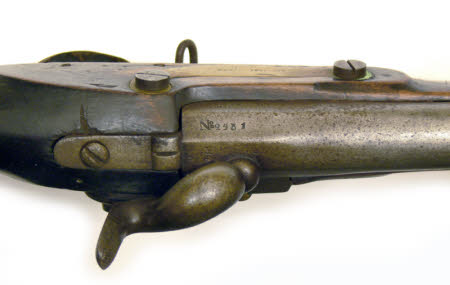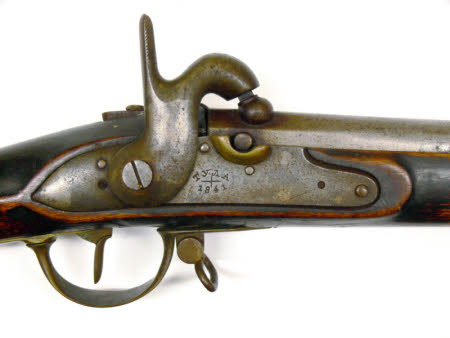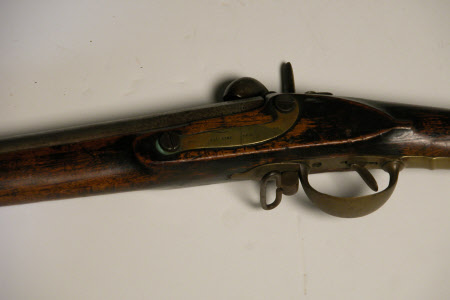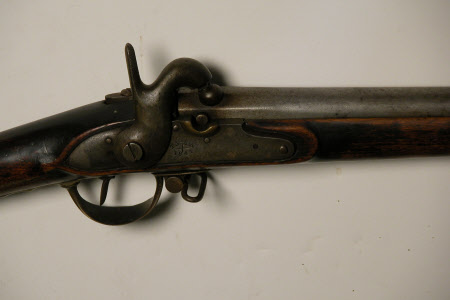Musket
Category
Arms and armour
Date
circa 1839 - circa 1850
Materials
Wood, iron, brass
Measurements
1055 mm (L); 18 mm (Calibre)
Place of origin
Tula
Order this imageCollection
Canons Ashby, Northamptonshire
NT 494723
Summary
Russian regulation issue musket, Pattern 1839, converted to the percussion musket Pattern 1844.
Full description
Russian regulation issue musket, Pattern 1839, converted to percussion Pattern 1844. Made at the Imperial Armoury at Tula, Russia. With an old label stating that the gun came from the Battle of Inkerman (November 1854). Round iron barrel with a brass blade fore-sight. The flattened breech stamped with Ordnance marks, the date 1841, and the serial No. 2431. The barrel tang with a raised slotted sight. Percussion nipple set into top of the breech. Round plug set into flintlock touch hole. The barrel secured by 3 brass barrel bands (the center band with a sling swivel), each band with Ordnance mark and date. The barrel bands with spring retainers. Barrel length 105.5cm Calibre 18mm. Wooden three-quarter stock (probably Birch), the butt of typical slender form with cheek-piece to left side. Brass furniture each with regulation marks and date comprising; butt-plate (also stamped on the tang with the Imperial Russian eagle), trigger guard (with sling swivel) and side-plate. Iron ramrod. Flat percussion lock, converted from flintlock, the plate of flat form, engraved with cyrilic letters of Tula and the date 1841. Percussion hammer with an off-set nose. Retained to the stock by 2 side-nails. Overall length 145cm Complete with 45cm triangular socket bayonet. Barrel band markings; Rear band - 1841 167 bAK Middle band - 1841 163 HTR Front band - 1841 24 HTR Furniture markings; Butt-plate - 19 1841 bAK and Russian Imperial eagle Trigger guard – 19 1841 bAK Side-plate – 153 1841 bAK
Provenance
Date of entry 1990 - provenance unknown
Marks and inscriptions
All metal parts: Various Russian Ordnance markings - see description
References
Bailey, 1972: DeWitt Bailey, Percussion Guns & Rifles
